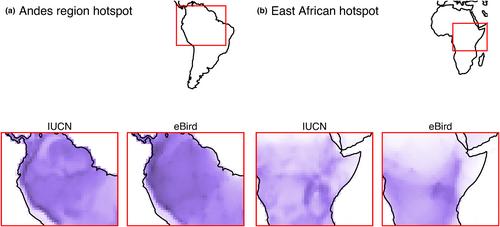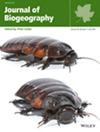Expert-based range maps cannot be replicated using data-driven methods but macroecological conclusions arising from them can
Abstract
Aim
Answering many fundamental and applied scientific questions relies on accurate geographic range maps for species, such as those compiled by experts working with the International Union for Conservation of Nature (IUCN). However, these maps are resource demanding to produce and only available for a limited number of organisms. Here, we test to what extent standardized, data-driven methods based on publicly available occurrences can reproduce expert-based IUCN range maps and the macroecological conclusions drawn from them.
Location
Global.
Time Period
Present.
Taxa
Birds.
Materials and Methods
We estimated the geographic ranges for 7385 non-marine bird species which either were non-migratory or had spatially connected breeding and wintering ranges from publicly available, georeferenced point occurrences. We then quantified the spatial overlap between these range estimates and the IUCN expert-derived range estimates. Finally, we compared global species richness patterns and the environmental correlates that emerge from both approaches.
Results
We find that range estimates based on point occurrence records overlap on average 52% with expert range estimates for the same species. The global species richness patterns estimated under both approaches are overall similar but show local and regional differences, for example, in the tropical Andes of northern South America and the Central Arc region of Africa. The estimated global drivers of richness are similar.
Main Conclusions
Expert-derived estimates of species distributions are not reproducible by data-driven approaches relying on currently available public records, even for well-documented taxa such as birds. However, these discrepancies do not substantially change our macroecological understanding of global drivers of bird diversity.


 求助内容:
求助内容: 应助结果提醒方式:
应助结果提醒方式:


